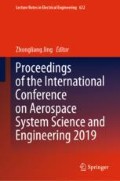Abstract
Global navigation satellite systems (GNSS) provide many more satellites than ever before. However for applications extremely sensitive to power consumption, not all satellites can be incorporated into the measurement vector, either because of the sheer computation overload or for purpose of power saving. These applications include but are not limited to unmanned aerial system (UAS), flying cars, and asset tracking. Thus, satellite selection methodology should be used to obtain subset satellites with good geometry. Recently, a downdate method proposed in receiver autonomous integrity monitoring (RAIM) can be used for reference in satellite selection, although RAIM and GNSS positioning are quite different. In this paper, a DOP-based ultra-rapid satellite selection methodology, the direct satellite selection (DS) method, is proposed according to the downdate method. Furthermore, to compensate for the shortcomings of the DS method, a constrained direct satellite selection (CDS) method is then proposed by adding error monitoring and restrictive conditions. The two algorithms are examined for precision performance and computational performance. Simulations show the DS method performs about three orders of magnitude faster than the recursive method, which is the existing fastest DOP based algorithm, with 0.25 increase in DOP on average relevantly when excluding the number of satellites from 42 to 8. And the CDS method performs about two orders of magnitude faster than the recursive method with only 0.15 increase in DOP even when excluding satellites from 42 to 6. Consequently, both the two methods have much lower computation time than all the existing DOP-based algorithms, with very little reduction in precision. Comparatively, the DS method has lower computational load and the CDS method has higher precision. Thereby, the algorithms proposed in this paper successfully address the satellite selection problem in two scenarios; the CDS method fits in fast satellite selection and high precision situation; the DS method can be employed in some extremely speed demanding circumstances.
Access this chapter
Tax calculation will be finalised at checkout
Purchases are for personal use only
References
Mosavi M, Divband M (2010) Calculation of geometric dilution of precision using adaptive filtering technique based on evolutionary algorithms. In: 2010 international conference on electrical and control engineering, IEEE. https://doi.org/10.1109/icece.2010.1171
Wang E, Jia C, Feng S, Tong G, He H, Qu P, Bie Y, Wang C, Jiang Y (2018) A new satellite selection algorithm for a multi-constellation GNSS receiver. In: Proceedings of the 31st International Technical Meeting of The Satellite Division of the Institute of Navigation (ION GNSS\(+\) 2018), Institute of Navigation. https://doi.org/10.33012/2018.15993
Phatak M (2001) Recursive method for optimum GPS satellite selection. IEEE Trans Aerosp Electron Syst 37(2):751–754. https://doi.org/10.1109/7.937488
Liu M et al (2009) A recursive quasi-optimal fast satellite selection method for GNSS receivers. In: Proceedings of the 22nd International Technical Meeting of the Satellite Division of The Institute of Navigation (ION GNSS 2009), Savannah, GA, September 2009, pp 2061–2071
Swaszek PF, Hartnett RJ, Seals KC (2016) Multi-constellation GNSS: new bounds on DOP and a related satellite selection process. In: Proceedings of the 29th International Technical Meeting of The Satellite Division of the Institute of Navigation (ION GNSS\(+\) 2016), Institute of Navigation. https://doi.org/10.33012/2016.14748
Kihara M, Okada T (1984) A satellite selection method and accuracy for the global positioning system. Navigation 31(1):8–20. https://doi.org/10.1002/j.2161-4296.1984.tb00856.x
Blanco-Delgado N, Nunes FD (2010) Satellite selection method for multi-constellation GNSS using convex geometry. IEEE Trans Veh Technol 59(9):4289–4297. https://doi.org/10.1109/tvt.2010.2072939
Zhang M, Zhang J (2009) A fast satellite selection algorithm: Beyond four satellites. IEEE J Sel Top Signal Process 3(5):740–747. https://doi.org/10.1109/jstsp.2009.2028381
Ward L et al (1999) GPS receiver satellite/antenna selection algorithm for the Stanford gravity probe b relativity mission. In: Proceedings of the 1999 National Technical Meeting of The Institute of Navigation, San Diego, CA, January 1999, pp 541–550
Walter T, Blanch J, Kropp V (2016) Satellite selection for multi-constellation SBAS. In: Proceedings of the 29th International Technical Meeting of The Satellite Division of the Institute of Navigation (ION GNSS\(+\) 2016), Institute of Navigation. https://doi.org/10.33012/2016.14608
Swaszek PF, Hartnett RJ, Seals KC, Swaszek RMA (2017) A temporal algorithm for satellite subset selection in multi-constellation GNSS. In: Proceedings of the 2017 International Technical Meeting of The Institute of Navigation, Institute of Navigation. https://doi.org/10.33012/2017.14904
Blanch J, Walter T, Enge P, Wallner S, Fernandez FA, Dellago R, Ioannides R, Hernandez IF, Belabbas B, Spletter A, Rippl M (2013) Critical elements for a multi-constellation advanced RAIM. Navigation 60(1):53–69. https://doi.org/10.1002/navi.29
Author information
Authors and Affiliations
Corresponding author
Editor information
Editors and Affiliations
Rights and permissions
Copyright information
© 2020 Springer Nature Singapore Pte Ltd.
About this paper
Cite this paper
Chi, C., Zhan, X., Wu, T., Zhang, X. (2020). Ultra-Rapid Direct Satellite Selection Algorithm for Multi-GNSS. In: Jing, Z. (eds) Proceedings of the International Conference on Aerospace System Science and Engineering 2019. ICASSE 2019. Lecture Notes in Electrical Engineering, vol 622. Springer, Singapore. https://doi.org/10.1007/978-981-15-1773-0_2
Download citation
DOI: https://doi.org/10.1007/978-981-15-1773-0_2
Published:
Publisher Name: Springer, Singapore
Print ISBN: 978-981-15-1772-3
Online ISBN: 978-981-15-1773-0
eBook Packages: Physics and AstronomyPhysics and Astronomy (R0)

